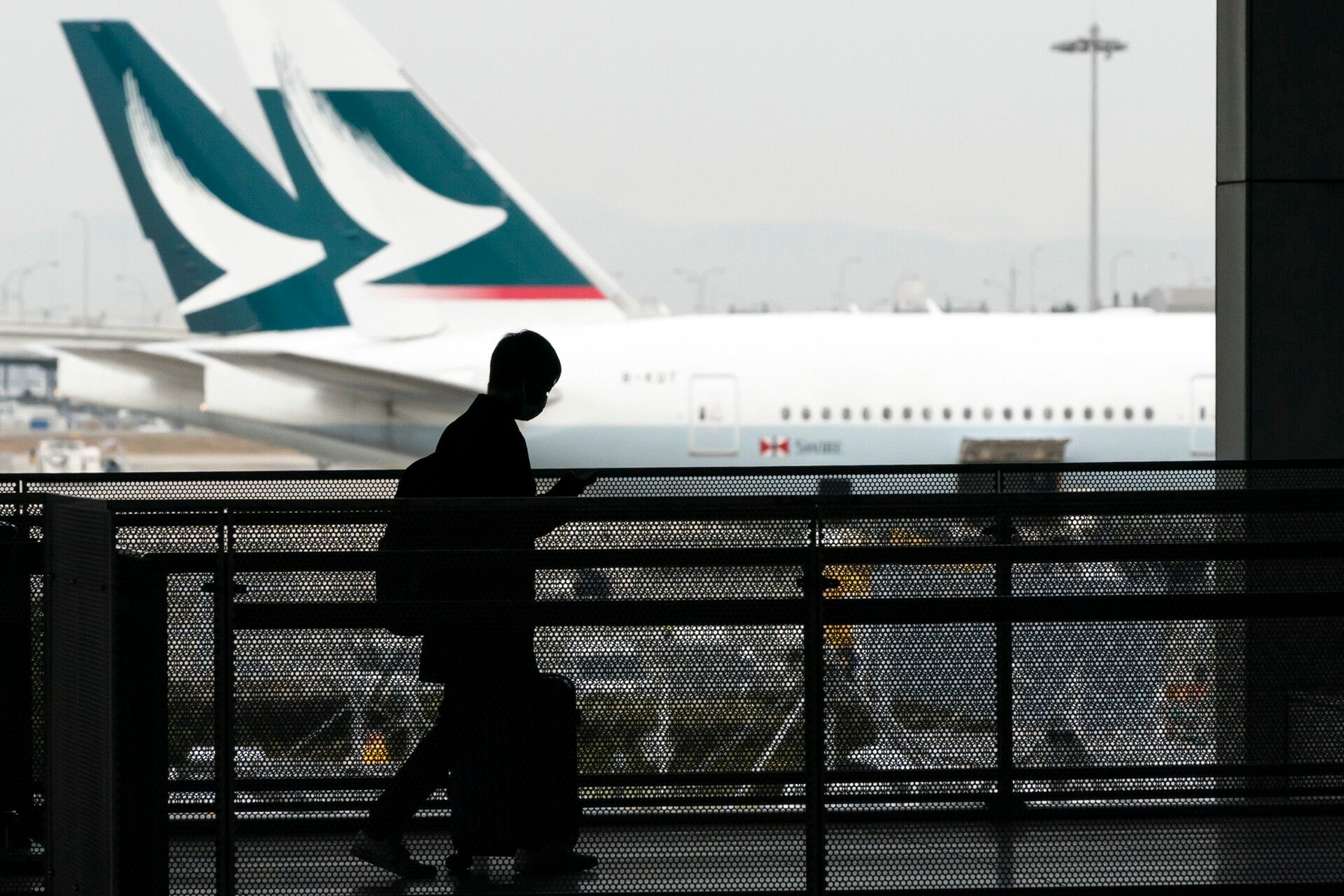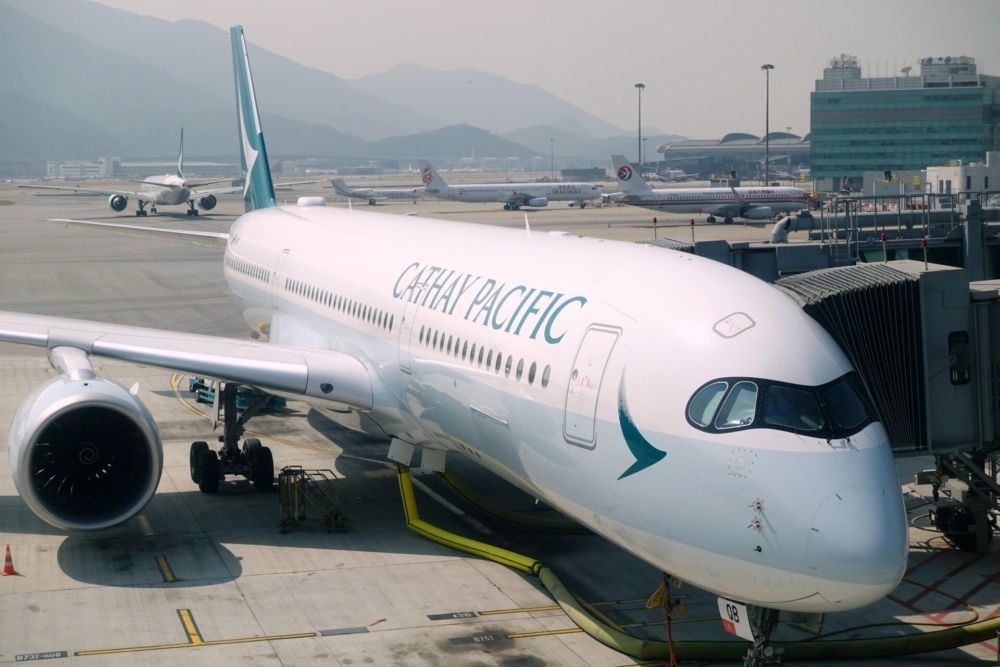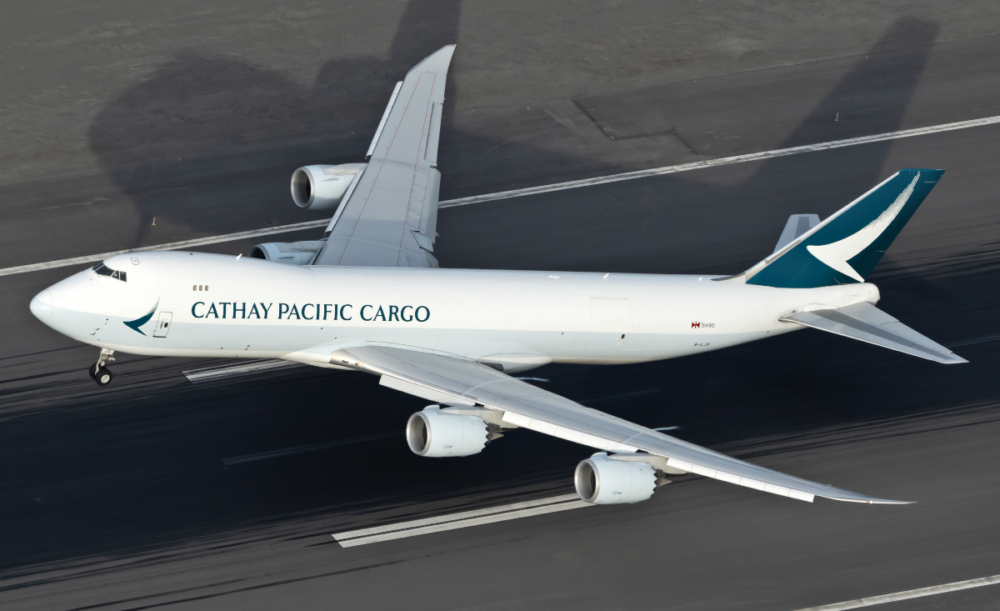Cathay Pacific continues to experience poor passenger numbers it says are a result of capacity reductions, travel restrictions, quarantine requirements, and the ongoing effects of COVID-19. Across November, the airline carried just 70,047 passengers.
On the bright side, that figure is an 85.2% improvement compared to November 2020. On the downside, it is down 97.3% on November 2019 passenger numbers. November's revenue passenger kilometers (RPKs) rose 87.1% year-on-year but were down 96% compared to November 2019.
"The operating environment for our travel business continued to be extremely challenging in November. Following the reopening of borders in the US and Australia, we increased our flight frequencies to cater for the rise in demand," said Cathay's Chief Customer and Commercial Officer Ronald Lam.
"We also managed to capture pockets of travel demand within Asia and resumed our Madrid and Milan services. Overall, we operated slightly more passenger flight capacity in November than we did in October. It represented approximately 12% of our pre-pandemic passenger flight capacity compared to November 2019."
Cathay's capacity goes into the Southwest Pacific, North America & Europe
Cathay's passenger load factor increased by 8.2% to 26.8% in November. Capacity, measured in available seat kilometers (ASKs), increased by 29.5% but remained 88.2% down on November 2019 levels.
Across November, Cathay Pacific offered 2,106 flights, taking the total number of flights operated across the 11 months to November 30 to 15,942. The airline is focusing on the Southwest Pacific, North America, and Europe in terms of capacity.
As measured by available seat kilometers, Cathay deployed most of November's capacity into the Southwest Pacific, followed by North America and Europe, respectively. Capacity put into these markets seriously outpaced capacity put into Southeast Asia, mainland China, Northeast Asia, and South Asia, the Middle East, and Africa.
"The slowdown in traffic, particularly student travel, from both Hong Kong and the Chinese Mainland to the UK had an impact on our overall travel volume. On average, we carried about 5% fewer passengers per day in November than we did in the previous month," added Mr Lam.
Stay informed: Sign up for our daily and weekly aviation news digests.
Cathay's cargo operations perform well
Helping to offset problematic passenger operations was a relatively buoyant cargo market. The airline carried 135,350 tonnes of cargo last month, an increase of 15.8% compared to November 2020. However, the November cargo figure is 23.9% down compared with the same period in 2019.
"Air cargo demand was consistently robust across our markets. In addition to underlying air cargo demand remaining strong, we also carried products that would usually be shipped by sea as retailers looked to replenish low inventories to meet customer demand," said Ronald Lam.
“To provide more capacity for our customers, we managed to operate approximately 71% of our pre-pandemic cargo capacity compared to November 2019, which was the highest level since the onset of the pandemic. We operated a record-high 1,035 pairs of cargo-only passenger flights."
Cathay Pacific acknowledges they face significant challenges, especially on the passenger side. The emergence of the Omicron coronavirus variant is further dampening demand over the usually busy holiday season. The Hong Kong SAR Government’s tightening of quarantine requirements isn't helping things either.
Cathay Pacific says they've adjusted their December flight schedule. The airline plans to operate no more than 12% of its pre-pandemic passenger flight capacity over the month. Cathay Pacific's January flight schedule remains under review.



